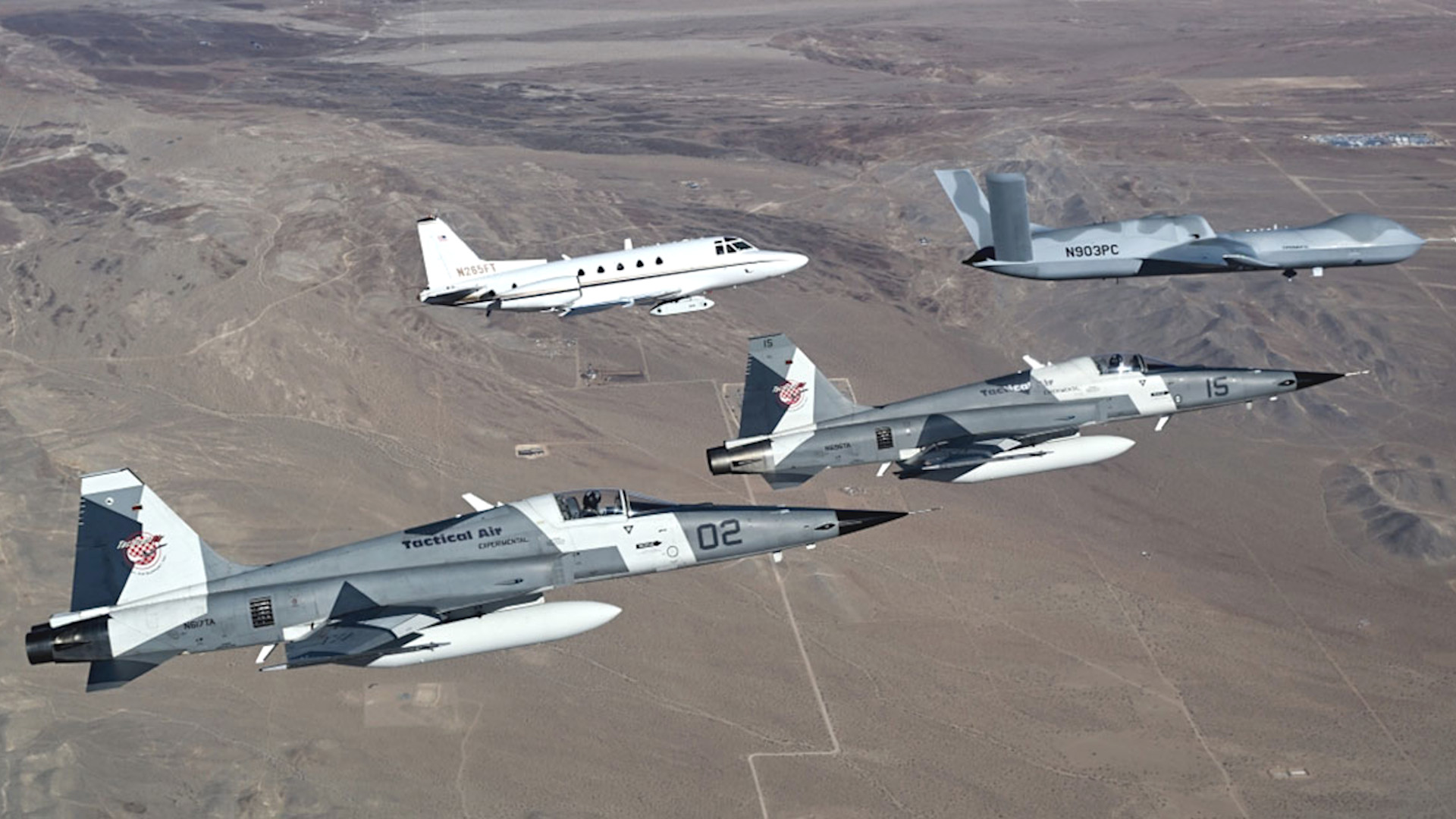A General Atomics MQ-20 Avenger drone, two Tactical Air Support F-5 Advanced Tiger aggressor jets, and a modified Rockwell Sabreliner business jet playing the role of a surrogate fighter, recently took part in a significant demonstration of crewed-uncrewed teaming capabilities. All of the aircraft were equipped with versions of Lockheed Martin’s compact TacIRST infrared search-and-track sensor, which you can read more about in our exclusive coverage on the system here. The aircraft worked collaboratively to detect and monitor multiple airborne targets with targeting and other information being shared via a distributed mesh network. Five digitally simulated Avengers were also integrated into the demonstration, something General Atomics has done as part of previous uncrewed teaming testing in the past.
General Atomics Aeronautical Systems, or GA-ASI, revealed details about the test, which it said took place on November 17, in a press release today. In addition to Tactical Air Support (TacAir), GA-ASI said that Lockheed Martin, General Dynamics, and the U.S. military were involved in the demonstration to varying degrees. Online flight tracking data also showed a third F-5AT and a Lancair Legacy light aircraft appearing to operate together with the four aircraft mentioned in the press release, but what roles they might have served in the demonstration are unclear.
From the GA-ASI press release, the TacIRST sensor was absolutely central to this particular event. An IRST sensor, in general, offers a valuable alternative and/or companion to a radar for spotting and tracking aerial threats that is immune to radio-frequency jamming. In addition, unlike radars operating in an active mode, IRSTs operate entirely passively and therefore do not alert a target to their presence. IRSTs are especially useful at detecting targets with signature reduction (stealth) in the radio-frequency spectrum. When combined with radar, they offer a powerful enhancement when it comes to searching for, targeting, and attacking airborne threats.
“Flying four platforms with TacIRST installed was a major milestone for Lockheed Martin,” Matthew Merluzzi, Senior Program Manager at Lockheed Martin, said in a statement. “By leveraging open mission systems, our team has demonstrated that common platform integration is possible across a variety of vehicles bringing advanced capabilities to our warfighters quicker and more affordably.”
TacIRST system is a relatively new development and TacAir was the first known operator, announcing in October that it had finished the initial flight testing of the sensor on its F-5ATs, as you can read more about in this full War Zone profile on those aircraft. On the F-5AT, the system consists of a single forward-looking aperture on top of the nose, providing an staring infrared sensor capability in that one direction.
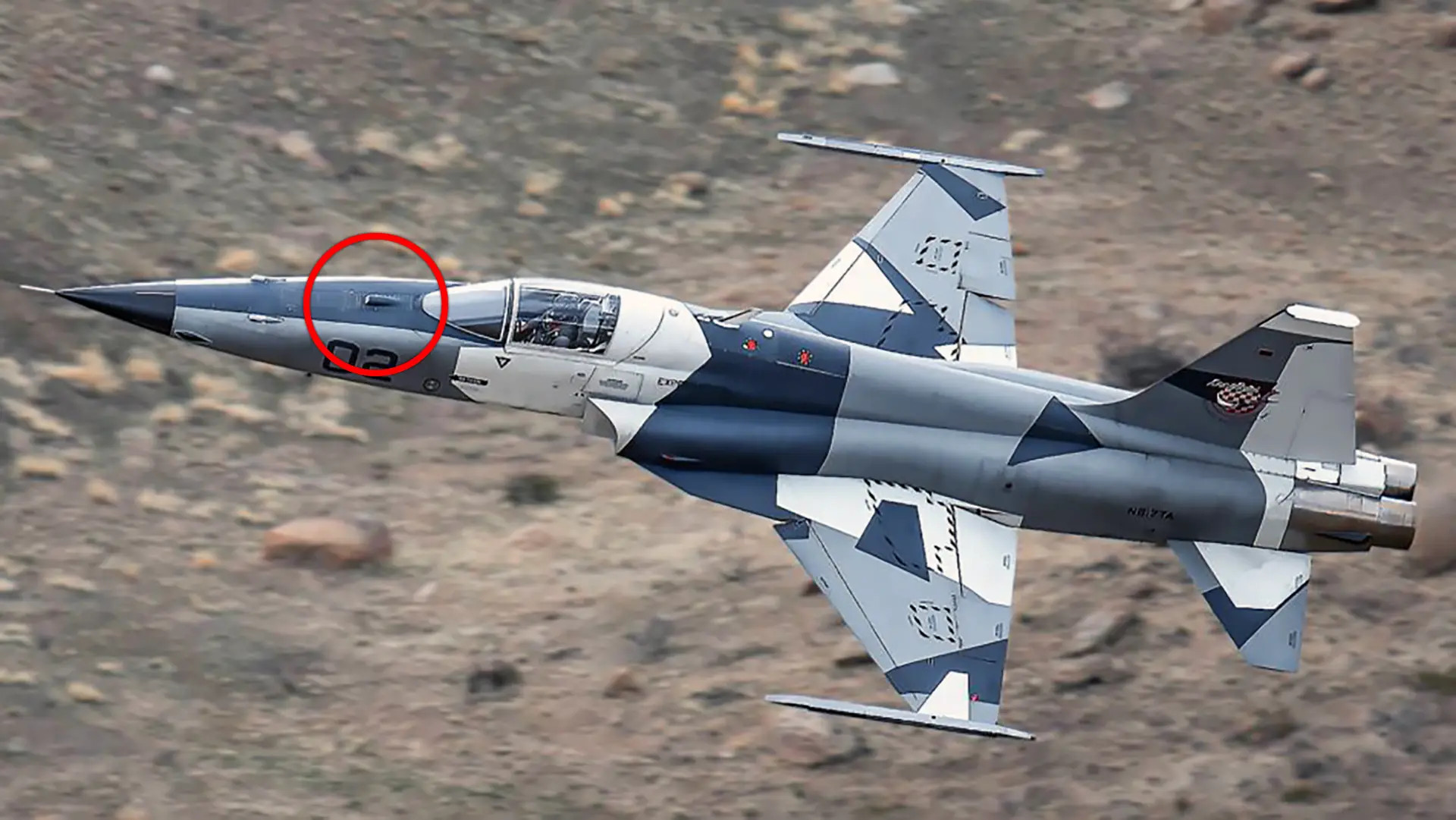
From the pictures that General Atomics included with its press release, which it says were provided by TacAir, the Sabreliner, which was operated by Lockheed Martin, carried a podded version of the TacIRST with a number of apertures offering greater sensor coverage in multiple directions. Pictures of a similar, if not identical podded TacIRST system were included in a trademark application that Lockheed Martin submitted to the U.S. government last year.
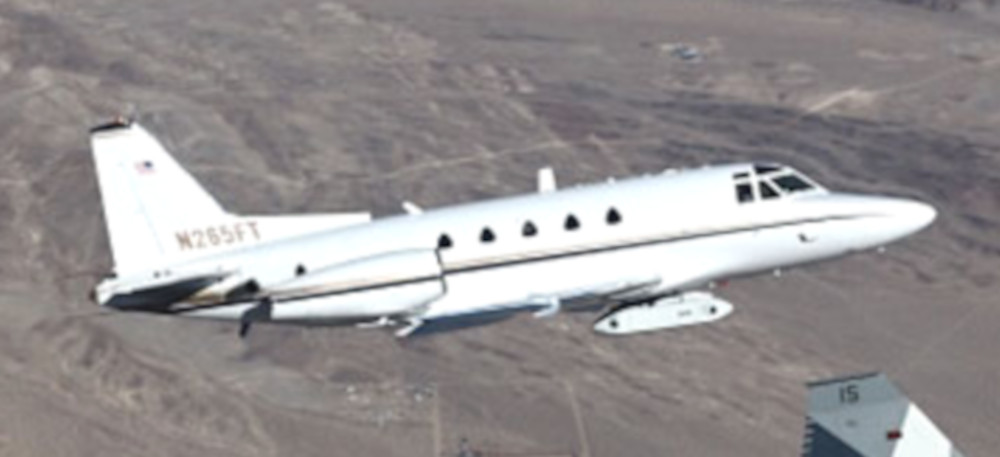
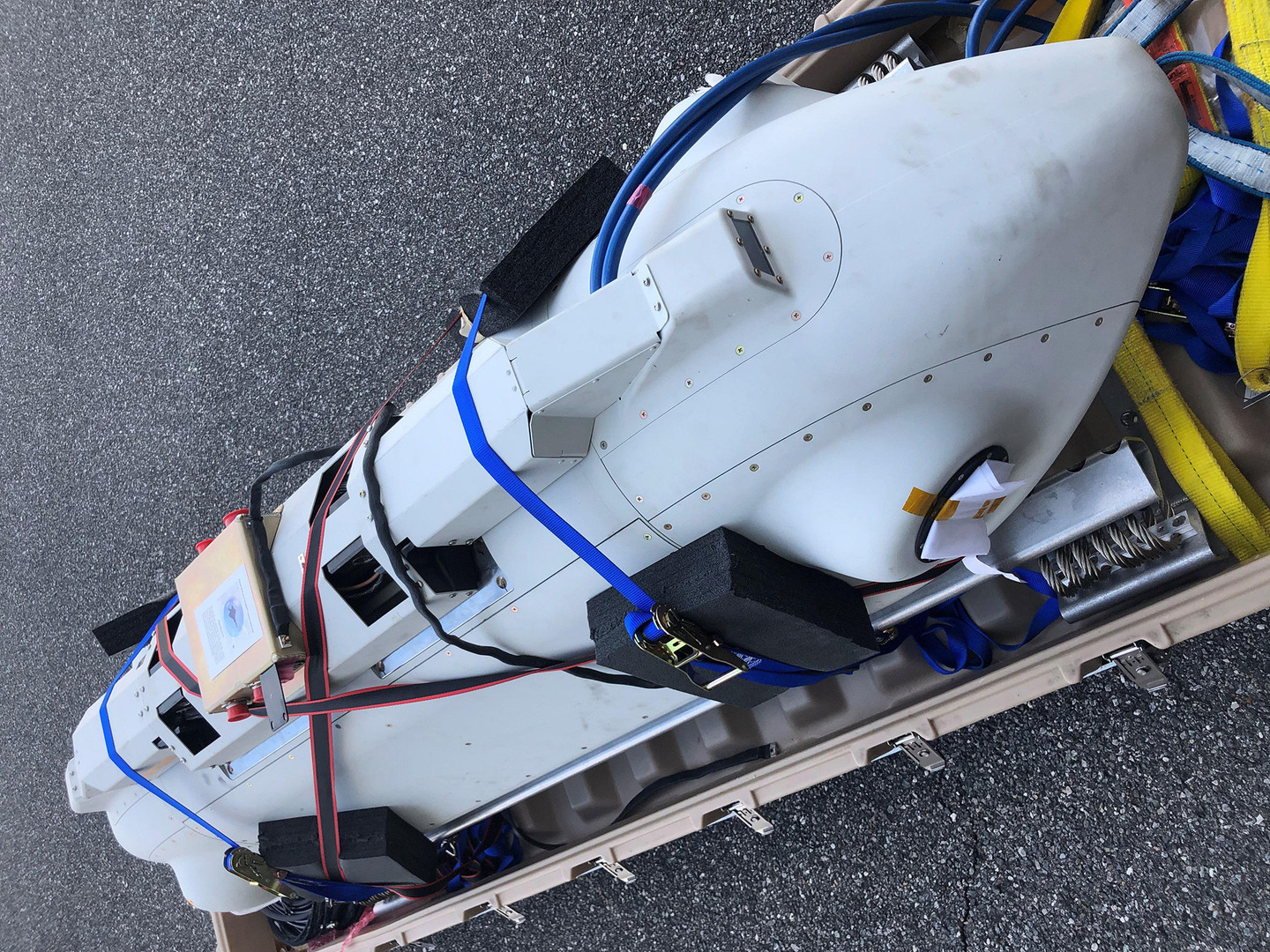
It is unclear how the TacIRST was installed on the Avenger drone, which is also known as the MQ-20. Available pictures from the demonstration do not provide a clear look at the uncrewed aircraft’s left wing, so it is possible that it could be carrying a podded type. As shown in the case of the F-5AT, the sensor can be installed in a very discreet fashion, so it may also have been integrated internally.
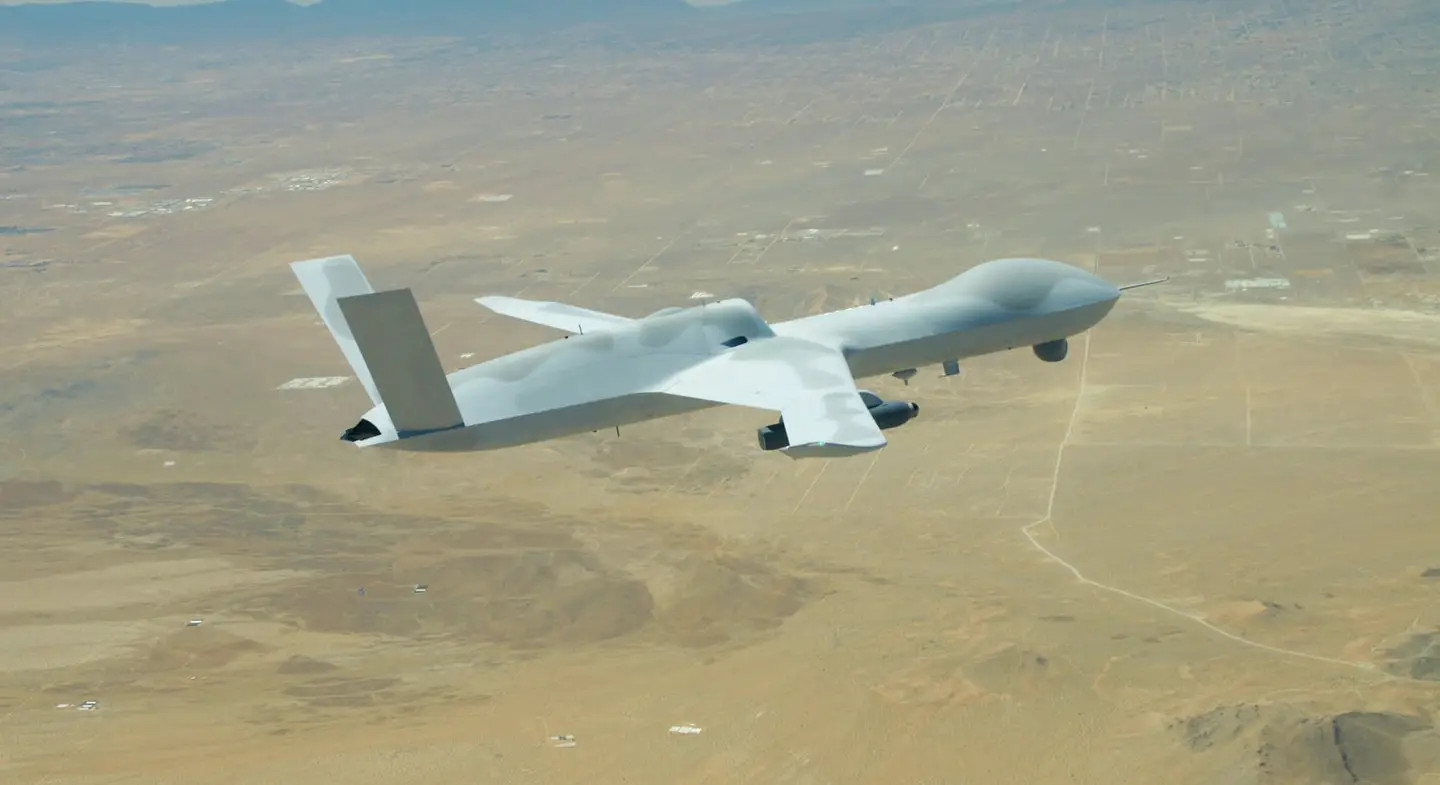
“All aircraft performed coordinated maneuvers to sense relevant airborne targets in the infrared spectrum,” according to GA-ASI’s press release. “The MQ-20 and Sabreliner were digitally connected over a Tactical Targeting Network Technology (TTNT) mesh network to share sensing observations.”
First used on the U.S. Navy’s EA-18G Growler electronic warfare jet, the TTNT data link, which transmits information via an IP-based waveform, has since become a key component of U.S. military-funded work on new aerial networking capabilities. TTNT was notably used to link a Marine Corps AV-8B Harrier jump jet to a Kratos UTAP-22 Mako loyal wingman-type drone during testing in 2015 and has been used in other crewed-uncrewed teaming testing since then, among other things.

“These live tracks were provided by Lockheed Martin’s TacIRST sensor and was processed on a General Dynamics Mission Systems’ EMC2 [Enterprise Open System Architecture Mission Computer] Multi-Function Processor (MFP), commonly referred to as ‘the Einstein Box,'” according to GA-ASI. “Using this software-defined architecture, the flight demonstrated crewed and uncrewed teaming between the MQ-20s, Sabreliner and manned F-5AT tactical fighters.”
General Dynamics’ current and past relationship to the EMC2 is unclear, but the system was developed initially at least in part by Lockheed Martin’s famed Skunk Works advanced projects division. First publicly unveiled in 2017 as part of the development of upgrades for the U.S. Air Force’s U-2S Dragon Lady spy planes, the Einstein Box is a modular, open-architecture mission computer capable of being rapidly configured and reconfigured, both on a hardware and a software level, to perform different functions. Skunk Works and the Air Force have notably used EMC2s on U-2S to test a variety of new communication gateway, inflight data processing, and various artificial intelligence (AI) and machine learning-driven capabilities in recent years.
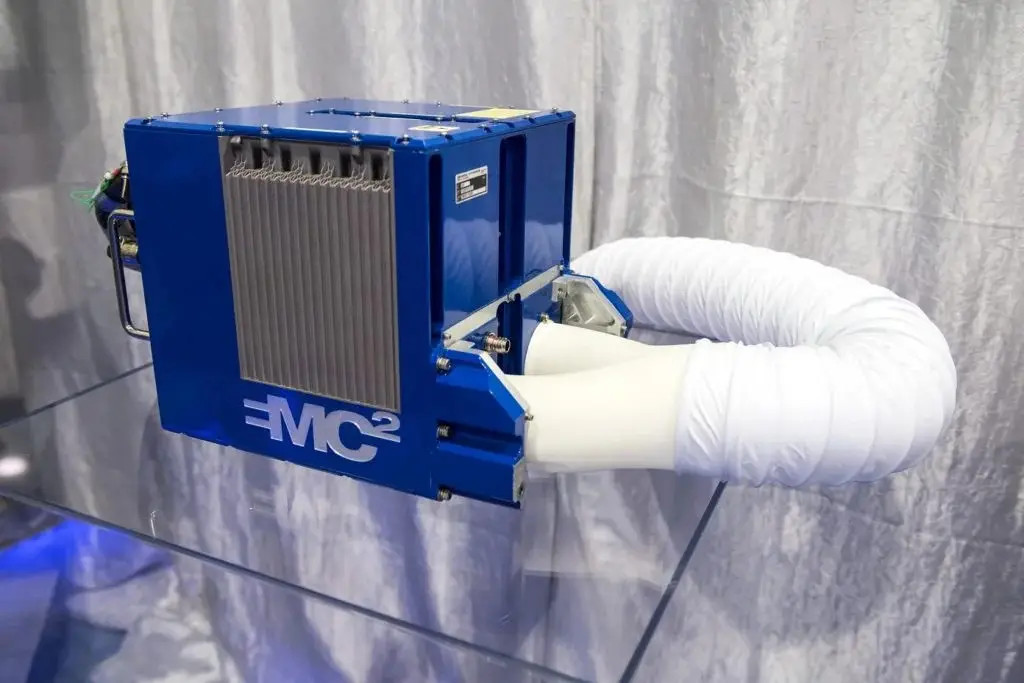
As part of this demonstration, the Avenger was also operated in at least a semi-autonomous fashion and used an “autonomy core” system provided by the U.S. military. That software-defined system, developed through the Defense Advanced Research Projects Agency’s (DARPA) Collaborative Operations in Denied Environment (CODE) program, was linked directly to the TacIRST, according to GA-ASI, though it is unclear exactly what kinds of autonomous functionality this enabled.

This demonstration of more complex crewed-uncrewed teaming capabilities is significant in and of itself, but the various specific elements tested here are equally important. The U.S. military, among others, increasingly views crewed and uncrewed platforms working collaborative together on various levels as absolutely essential to success in future aerial combat operations.
Distributed sensing coupled with mesh networks, as well as advanced autonomous capabilities, among other things, are critical to enabling these concepts of operations. For example, U.S. military-sponsored and independent wargaming has consistently shown that swarms of lower-cost drones with high degrees of autonomy, linked together via a mesh network, could be game-changing in a future conflict with Chinese forces over Taiwan.
When it comes to IRSTs, specifically, networking multiple arrays of sensors together offers important advantages over individual sensors operating independently due to their ‘2D’ nature. As such, fusing data from multiple IRSTs together allows for triangulation, which produces more accurate engagement-quality target tracks, and does so faster. Networked sensors are also just better able to more quickly and effectively spot threats across a broader area. Last year, Lockheed Martin demonstrated a broadly similar capability with examples of the company’s Legion Pod equipped with IRST sensors and TTNT data links.
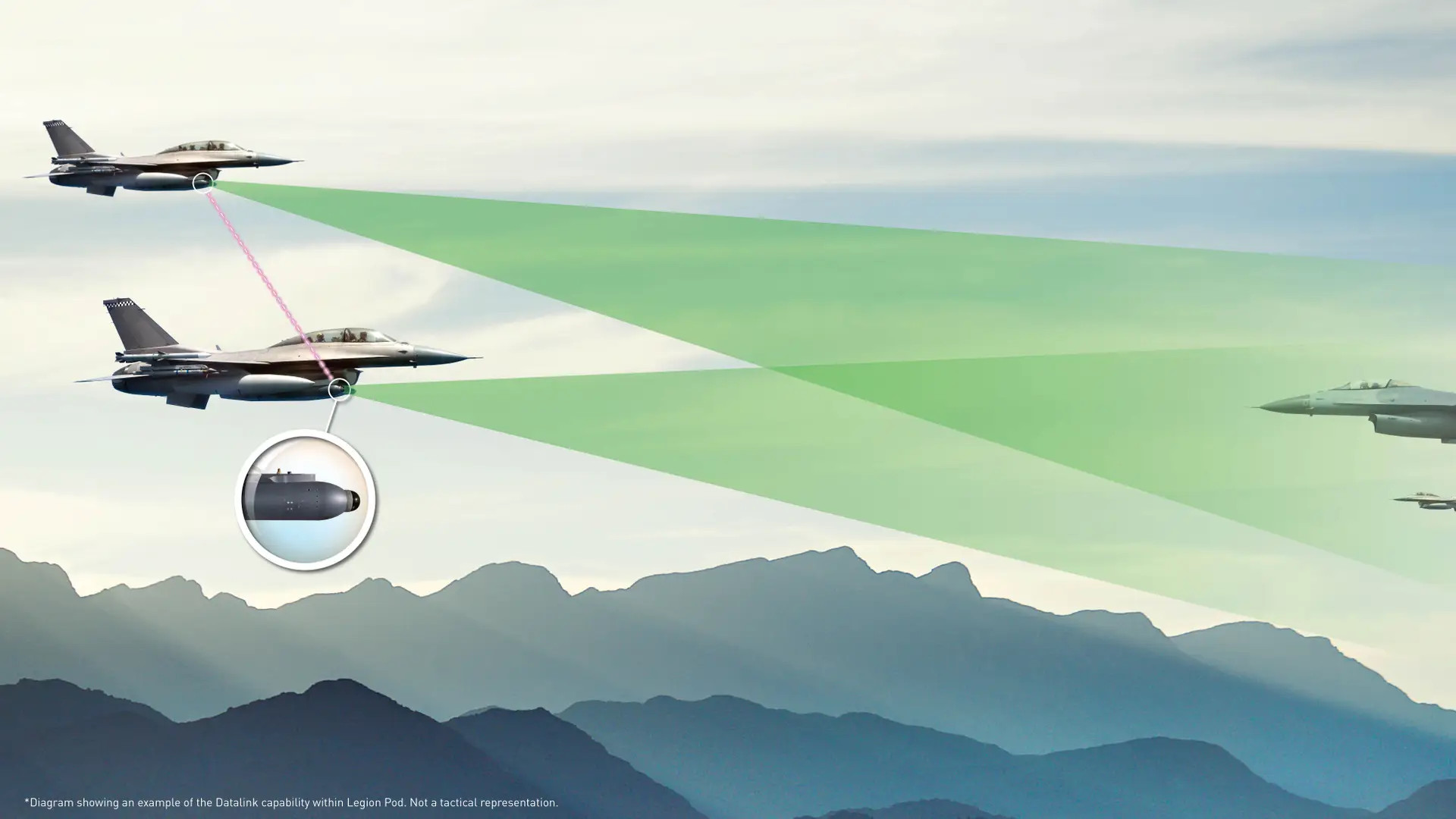
It’s also worth noting that the coverage offered by the podded TacIRST system on the Saberliner might be capable of providing incoming threat detection capabilities and general increased situational awareness for any group of aircraft it’s networked into. The individual TacIRST sensors are similar to, and may even be derived from, ones used on distributed aperture vision systems, like the one found on the F-35 Joint Strike Fighter, and infrared threat warning systems used on various aircraft.
GA-ASI’s press release does not specifically say that this demonstration was tied directly to any U.S. military program or programs, but does say it showed a “maturing CCA ecosystem.” CCA here is Collaborative Combat Aircraft, a term that the U.S. Air Force has increasingly been using to generally describe future drones with high levels of autonomy designed to work closely together with crewed aircraft. It is also now used to refer to a subprogram of the service’s larger Next Generation Air Dominance (NGAD) effort to acquire at least one type of drone initially to serve in this role. NGAD is a multi-faceted initiative that also includes work on a stealth six-generation crewed combat jet and various weapons and other systems, such as sensors, networking and battle management capabilities, and next-generation engines, which you can read more about here.
GA-ASI, as well as Lockheed Martin’s Skunk Works, are among the companies already working on drones and other related capabilities with a clear eye toward the Air Force’s CCA program, a competition around which is expected to kick off next year.

IRST sensors have been a key feature in a number of advanced U.S. military drone programs, including the Air Force’s Skyborg initiative and its secretive Off-Board Sensing Station (OBSS) effort. IRSTs may well be a central aspect of the OBSS program, details about which are limited, but this seems to be focused, at least in part, on developing lower-cost drones that could be used in swarms as aerial sensing networks.
An IRST was also the first sensor to appear installed on one of the Royal Australian Air Force’s MQ-28 Ghost Bat loyal wingman drones. At least one Ghost Bat is now also supporting U.S. military testing work.
“This is a clear demonstration of our rapidly maturing Autonomous Collaborative Platform (ACP) mission system suite and moves us one step closer to providing this revolutionary capability to the warfighter,” Michael Atwood, GA-ASI Senior Director of Advanced Programs, said in a statement included in today’s press release. “It demonstrated effective collaboration between four established defense prime contractors flying with advanced sensing, crewed and uncrewed teaming, and advanced airborne high-performance computing to meet challenging air dominance scenarios.”
Altogether, GA-ASI and its partners have offered a new window into what future high-end air combat operations, conducted by the U.S. military and others, can be increasingly expected to look like.
Contact the author: joe@thedrive.com
